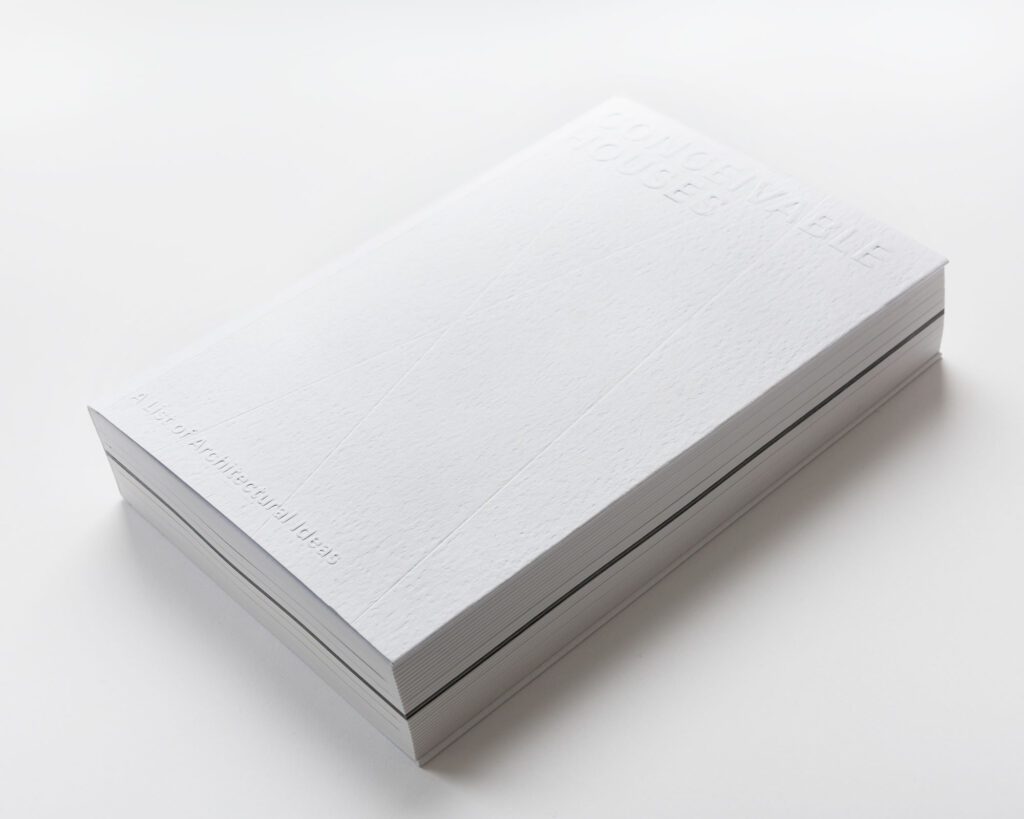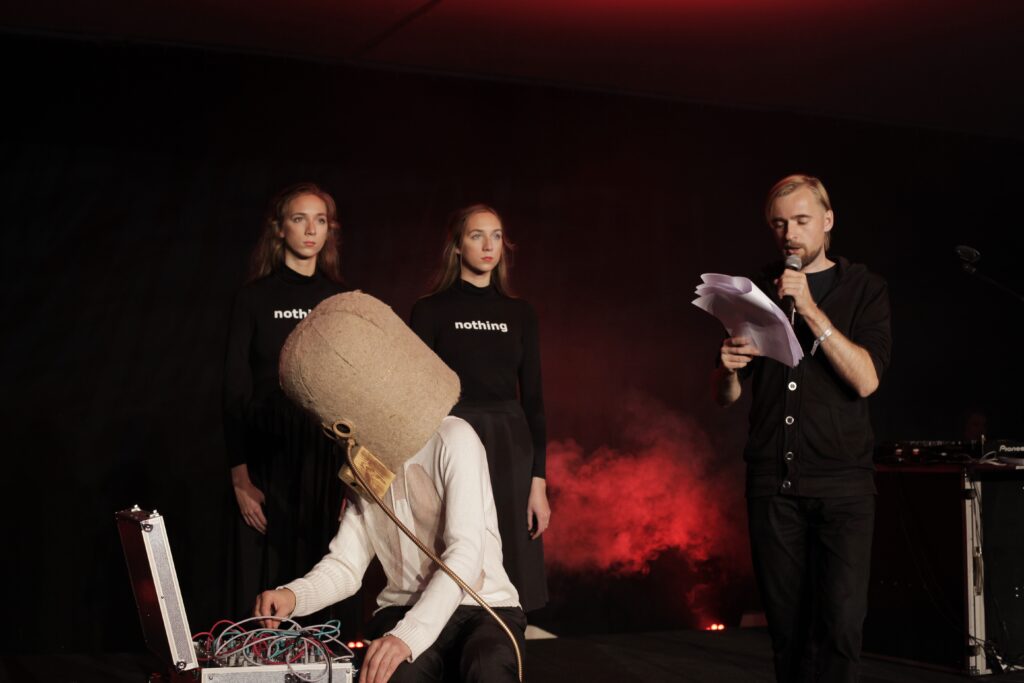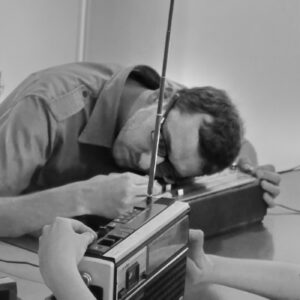CONCEIVABLE HOUSES. A LIST OF ARCHITECTURAL IDEAS
Author: Urmo Mets
Illustrations: Lauri Eltermaa
Book Design: Tuuli Aule
Publisher: ;paranoia, 2017
Urmo Mets’ Conceivable Houses can be read in either a conceptual or realist way. A realist reading is the opposite of a conceptual reading in the sense that the goal is not to take in a particular idea, but, on the contrary, to find oneself transported through the text into an imaginary environment where no normal or habitual processes can be expected to work.
Urmo Mets in his Conceivable Houses proposes nearly two hundred terse ideas of hypothetical houses, mostly expressed in one or two sentences. As the author says in the foreword, these ideas are born ‘from the need to ask how the effect of architecture could be expanded […] and what fantastic results could be achieved by setting unconventional goals to architectural practice’ (page 4). The book also contains the author’s correspondence with the architecture theoretician Leon van Schaik and concludes with a ‘Manifesto Against the Super-development of Space’ which coins new terms with the enthusiasm akin to Deleuze and Guattari.
As such, Conceivable Houses can be viewed as a practical creativity booster for practicing architects suffering from the shortage of ideas. Similarly to Brian Eno’s ‘Oblique Strategies’ card set or Valdur Mikita’s Äparduse rõõm [Joy of Mishap], when applied to a particular field of creative endeavour—in this case, the design of buildings. However, limiting oneself to this utilitarian viewpoint would unnecessarily stifle the potential of Conceivable Houses. Approaching this book as a sovereign work of literature, which it certainly is, I noticed two possible readings.

The first and the obvious reading of the Conceivable Houses presents it as a conceptual work: a catalogue of pure ideas, indifferent to their naturalist imaginability or material feasibility. Of literary works of the same ilk, the first two to come to my mind are Lev Rubinstein’s Catalogue of Comedic Novelties and Italo Calvino’s Invisible Cities. Without a mention of these two, of course, the reviewer of Conceivable Houses cannot entertain any hope of escaping unscathed.
The second reading could be described as realist, prosaic, and this is the one which fascinates me more. Several ideas in Conceivable Houses are certainly compelling enough to raise the question in the reader: why has the author stopped and not dared to develop the concept beyond the few sentences, to truly flesh out this house and make it more ‘real’? Certainly at least in several cases the author has clearly felt inspired enough to let the description grow longer than normal and must have exercised restraint for the idea to remain in line with the book’s concept and within the limits of one page. This reading is the opposite of the conceptual reading in the sense that the goal is not to take in a particular idea, but, on the contrary, to find oneself transported through the text into an imaginary environment where no normal or habitual processes can be expected to work. The quintessence of such possible house concepts appears to have been captured on page 188: ‘a house whose architecture allows observing paranormal phenomena more easily’. Yet, of course, the ‘Manifesto Against Super-development of Space’, which closes the book, also celebrates proliferation, self-organisation and coincidental metamorphoses.
Several descriptions of such environments can be found in fantasy and speculative fiction—in the East European cultural space, perhaps the most prominent example could be the Zone from Strugatsky Brothers’ Roadside Picnic, but also the forest in their Snail on the Slope. The Zone has turned out to be a most productive and inspirational image whose shadow has been cast over all Eastern European Ruildings and Wrectures during the last couple of decades (terms coined by Urmo Mets in the ‘Manifest’). The Area X in Jeff Vander Meer’s Southern Reach Trilogy appears as a modern ecocritical variation of the Zone.
A few literary works deal with houses as ‘zones’ of uncertainty. One of the best known examples is Mark Z. Danielewski’s hefty experimental novel House of Leaves, but several J. G. Ballard’s earlier short stories also describe psychoanalytical houses which resonate with the pathologies and nightmares of their residents. Truthfully, quite a few Urmo Mets’ conceivable houses sound like a miniature summaries of Ballard’s short stories. The Estonian writer Mehis Heinsaar has also sketched maze-like attics and basements and the image of an ahjualune’s* apartment beneath the kitchen floor (page 105) appears like it could have been borrowed from Heinsaar’s lost notebook that he left in a taxi in Tallinn a few years ago.
** An ahjualune (translated as ‘hobgoblin’ in Urmo Mets’ book) is a character from Estonian folklore. He is a tiny little man with a beard who dwells under the kitchen floor and is capable of eating enormous amounts of food in an instant.

‘We must trust our thoughts while we sleep. We must trust our hunches. We must begin to examine all of those things that we think of as irrational simply because we do not understand them. In other words, we must distrust the rational, the logical, the sane, in an attempt to reach for something higher, for something more worthy.’
(Jeff VanderMeer, Acceptance. The third book in the Southern Reach Trilogy. New York: Farrar, Straus & Giroux, 2014, pp 212-213.)
‘When we find something in the world to be “against reason”, then, quite confidently, we can claim this to be the “truly real”. A reflection of our mind it certainly is not! Thus, absurdum ergo est! Anyway, it is the precisely the valuable part of credo, quia absurdum.’ (Uku Masing, ‘Kosmose tunnetamisest ja keelest’ [‘Of Perception and Language of Cosmos’] in Pessimismi põhjendus [The Case for Pessimism]. Tartu: Ilmamaa, 1995, p.144.)
‘“Green odorous abundance. Abundance of colors, abundance of smells. Abundance of life. And all of it alien. Somehow familiar, a resemblance somewhere, but profoundly alien. The hardest part was to accept it as alien and familiar at one and the same time, derived from our world, flesh of our flesh—but broken away, not wishing to know us. […]”
“When the order comes out,” proclaimed Hausbotcher, “we shall move some real stuff in there, not your lousy bulldozers and landrovers—in two months will turn it all into…er…a concrete platform, dry and level.”
“You will turn it,” said Acey. “If you don’t cop one in the jaw, you’ll turn your own father into a concrete platform. For straightforwardness sake.”’ (Arkady and Boris Strugatsky, The Snail on the Slope. Translated by Alan Meyers. New York: Bantam Books, 1980.)

SVEN VABAR earned his Master of Arts in Semiotics from the University of Tartu. His published writings include music and literary criticism and prose. He was the editor of the prose collection Mitte-Tartu [Non-Tartu] (2012) and he currently works at the Department of Literature and Theatre Studies of the University of Tartu.
HEADER photo by Marje Eelma.
PUBLISHED in Maja’s 2018 summer/autumn edition (No 94).





